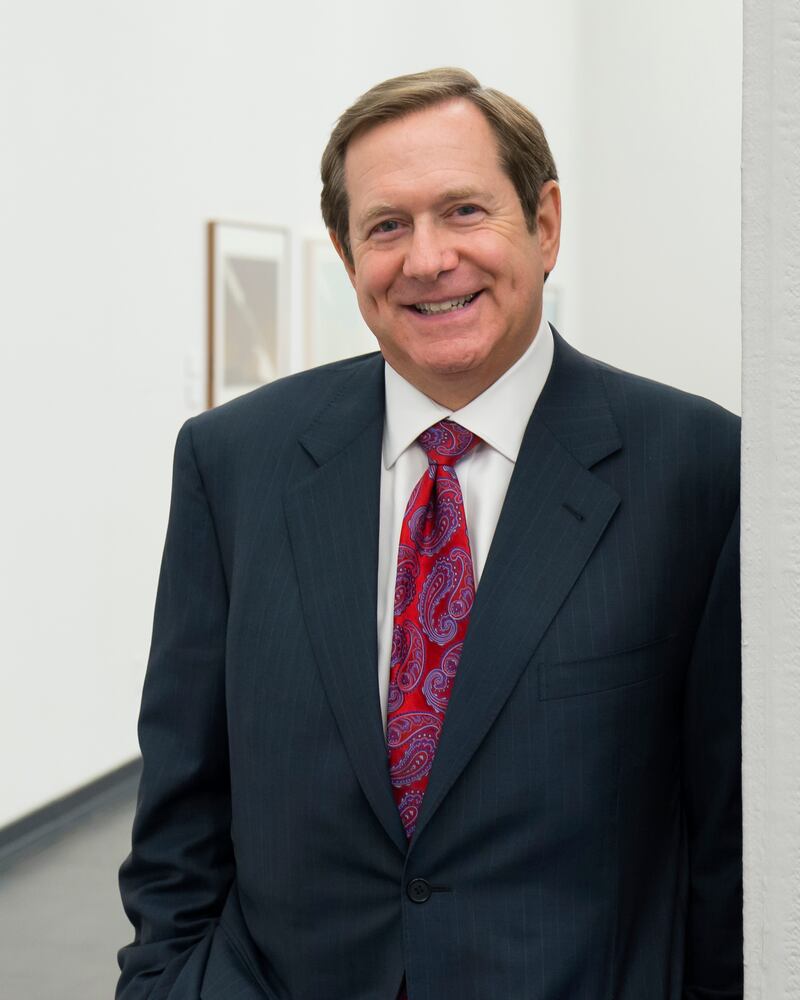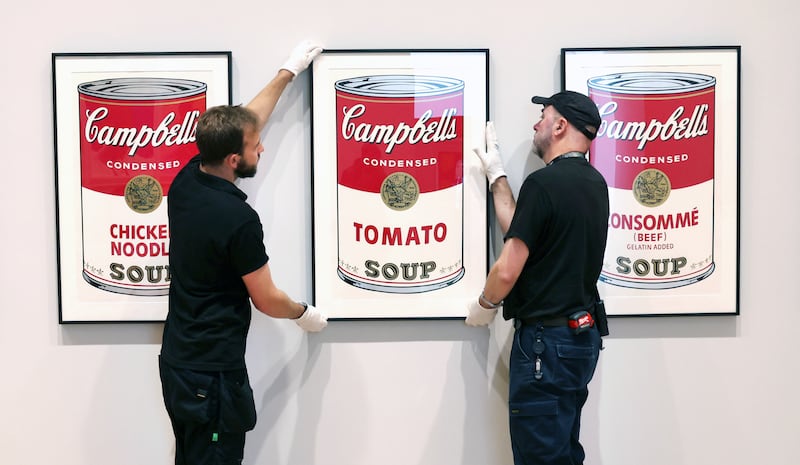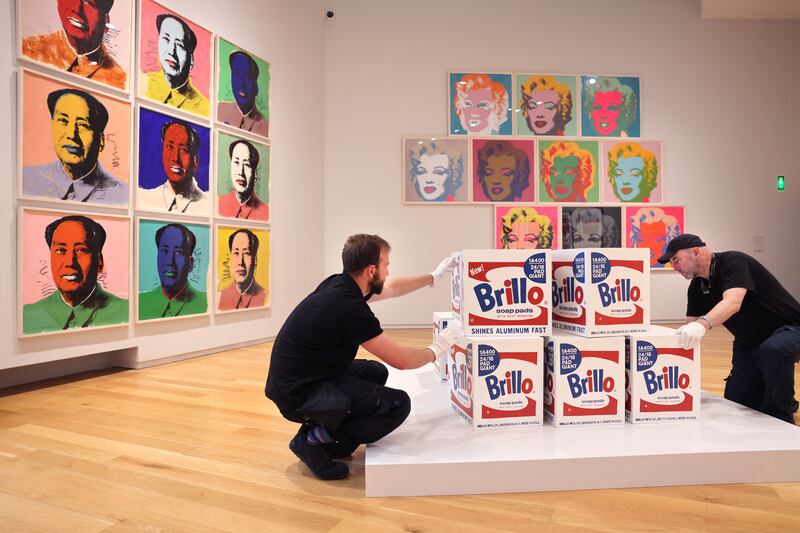Walking through the Hugh Lane Gallery’s ongoing Andy Warhol Three Times Out exhibition on Dublin’s Parnell Square, one name – other than the artist’s, of course – stands out: Jordan Schnitzer.
He has donated 72 pieces of Warhol’s work to the gallery for the exhibition, which includes more than 250 works borrowed from museums and private collections in the US, Canada, Europe and the Warhol Museum in Pittsburgh. The Portland, Oregon, native owns more than 1,300 Warhol works, amounting to one of the world’s largest private collections of the artist’s work collected over decades.
The art ownership is split between the Jordan Schnitzer Family Foundation and his personal collection, and a small amount of it is a corporate collection.
His mother, Arlene Schnitzer, opened the first contemporary Pacific Northwest Art Gallery with artists from Seattle, Portland and San Francisco when Jordan Schnitzer was a child, and she ran it for 25 years.
Actor Armie Hammer resurfaces as host of celebrity podcast
Heart-stopping Halloween terror: 13 of cinema’s greatest jump scares
Doctor Odyssey’s core message: just imagine Pacey from Dawson’s Creek holding you tight and saying, ‘Shhh, it’s okay’
Conor Niland’s The Racket nominated for William Hill Sports Book of the Year
“I always give my mother lots of credit that she opened the art door for me and once that door was opened, it’s never stopped,” Schnitzer says, with his father running a real estate business which Jordan has since taken over.

“I started working [in real estate] when I was 14 and sort of moved on up there in the real estate company for 35 years and we have offices in seven west coast cities… I work hard at my day job which lets me afford to do all the wonderful philanthropy, buy the art and serve the public with the art,” he says.
He says he has facilitated more than 180 exhibitions at 120 museums across America, solely from his collection, at no cost to the museums, and will “generally give outreach money to bring in seniors, kids, underprivileged kids, kids of colour, Native American kids.
“Depending upon the geographic location, we always say, tell us, museum, about your outreach programme, how can we help get more people to see the exhibition?”
And why the special interest in Warhol?
“Andy Warhol was, in our lifetime, probably the most foresighted artist of our time,” Schnitzer says, speaking about the artist’s history, from Warhol’s childhood in Pittsburgh to becoming a successful graphic artist in New York, to his legacy as an artist in Los Angeles and beyond.
“I have no sense of ownership, I have a great sense of stewardship over the thousands of works we have, and as much joy as I get from seeing the art, it can’t compare to the joy I get of sharing the art,” he says, having started buying Warhol pieces in 1988, growing the collection up to where it is now.

“I have a fabulous warehouse. I take care of all of the art. I never sold any art, it’s protected estate-wise forever. So in addition to buying any Andy Warhol work from the auction house galleries, I have worked with the foundation [The Andy Warhol Foundation for the Visual Arts] also to create one of the most significant collections.
[ Nothing Special by Nicole Flattery: coming-of-age tale of Warhol Factory girlOpens in new window ]
“We have 1,400 Warhol works, our collection is there to serve the public. So what happens is a museum, like the one in Dublin maybe called the Warhol foundation and said ‘boy, we’d like to borrow some work’, and they said, ‘well call Jordan Schnitzer, he is there to serve’, and we got the call and said ‘yes sir, yes ma’am, what do you need? How can we help?’.”
Thus, 72 Warhol pieces from the Jordan Schnitzer Family Foundation’s collection landed in the Hugh Lane Gallery in Dublin. They include screen-printed images of actress Marilyn Monroe and Chinese communist leader chairman Mao Zedong, as well as Campbell’s soup tins and the Electric Chair, along with other rarely seen works.
“Our collection is a live teaching collection, and so this is one of my big philanthropic activities, I have 11 people who work full time on our programme,” Schnitzer says.
“I’ve said often, too many eyes do not wear out the art,” he adds, explaining that his goal is to share his art collection of about 21,000 paintings, prints and sculptures, with as many people as possible from all backgrounds.
“The more work we have done culturally and socially in our foundations, the more successful the business has become. So two philosophical points: one is the more you help others around you, the better you will do in your business, and feel better about yourself as an individual,” he says, “second, let’s talk about art.”
And talk about art he does, with the foundation having eight or nine exhibitions travelling globally at any one time, and two sunsets by Warhol hanging in his house in Oregon.
If you ask Schnitzer who the two most important artists of the last 100 years are, he would say Picasso for the first half of the last century and Warhol for the second half.
“He does a series on Marilyn, on Mao, I can talk about each of those how they were earth-shattering… Gutsy, brilliant, way ahead of his time,” he says.

“The way [Warhol] imaged himself, he was gay at a time when that choice was not particularly well-received in many social circles. And he had a number of peculiarities, idiosyncrasies. Maybe some of those he actually embraced as part of his persona.
“But his art – to say staggering is an understatement. He would pick one theme after another. He got his start with the soup cans as a fine artist.”
At the time, Warhol was making money as a graphic artist, but wanted to move into fine art. Friends and gallery owners told him to do work about his life and what he liked to do. Growing up, the Warhols were poor and had Campbell’s tomato soup almost every day, which apparently inspired the famous soup can series.
“An artist has to figure out a different way of getting that message out and creating their own brand, so to be a big, big international artist, you have got to be pretty special. Andy Warhol, I mean his images of Marilyn and Mao now are probably, with the Mona Lisa, the most-known art images in the world.”
At 72 years old, Schnitzer has no plans to slow down. He had hoped to come over to see the Warhol exhibition in the Hugh Lane Gallery before it finishes, but this has not proven possible as yet. He concluded by saying: “if every single person in Dublin doesn’t go see that show, it would be a shame.”
Andy Warhol Three Times Out continues at the Hugh Lane Gallery until January 27th
- Sign up for push alerts and have the best news, analysis and comment delivered directly to your phone
- Find The Irish Times on WhatsApp and stay up to date
- Our In The News podcast is now published daily – Find the latest episode here






